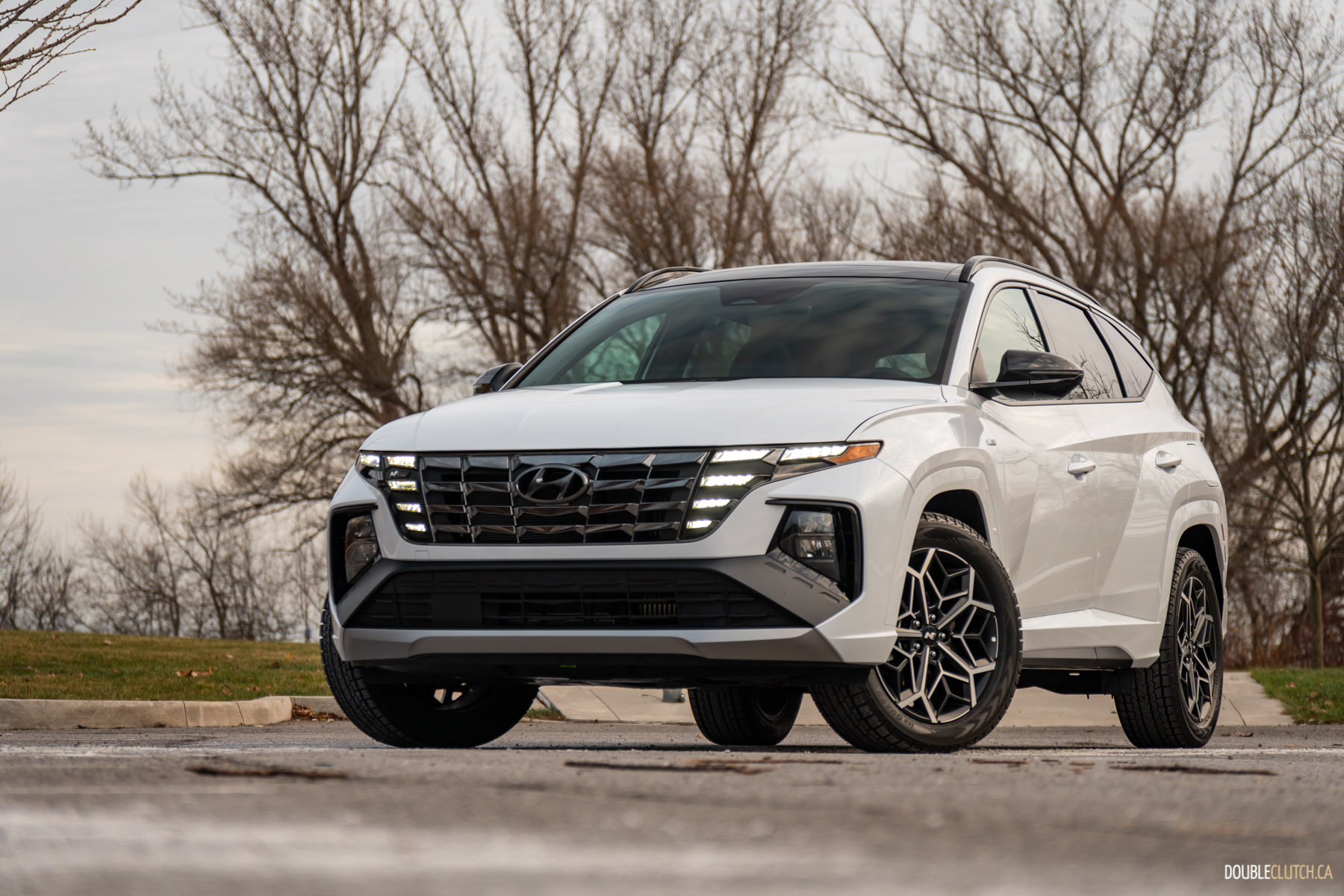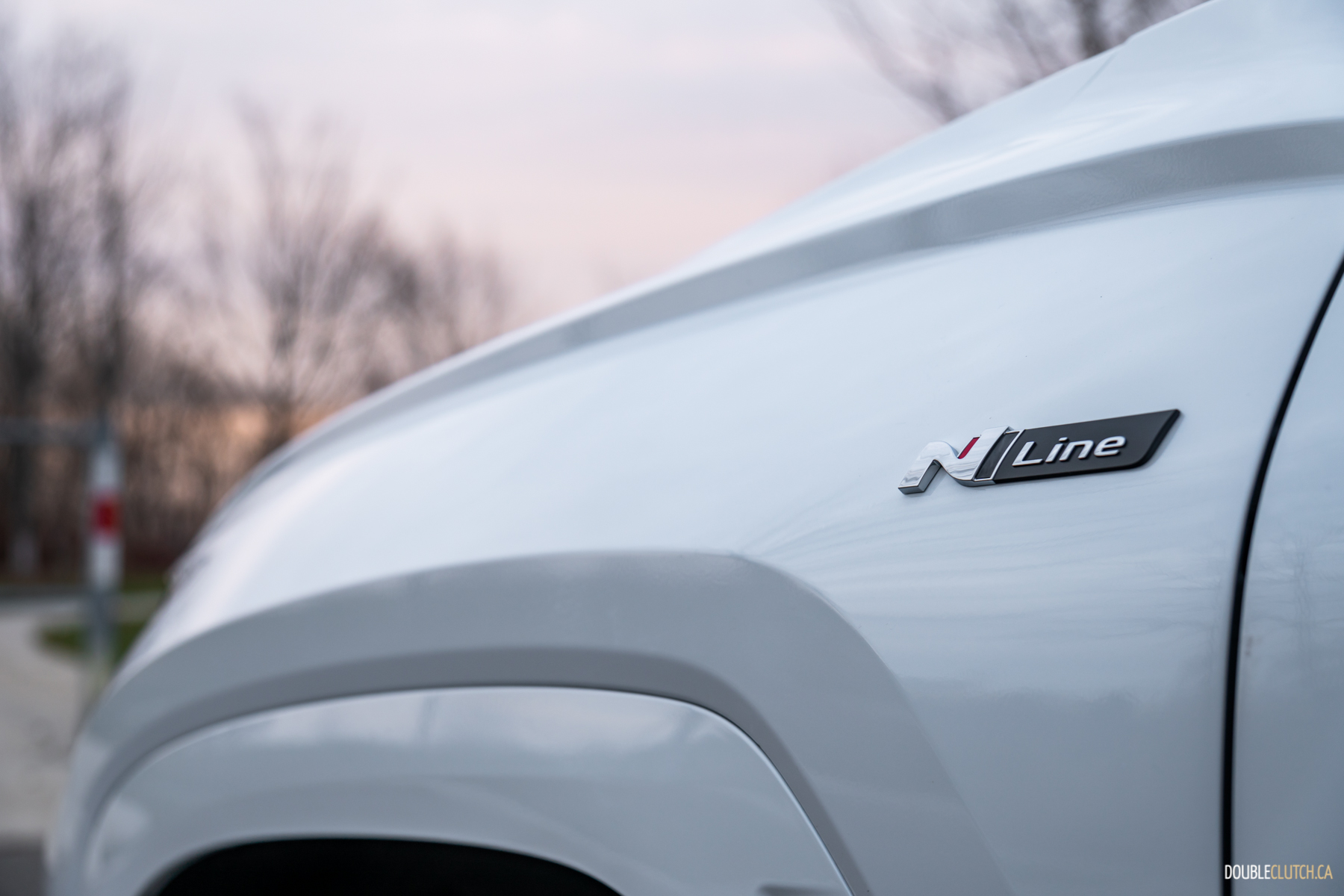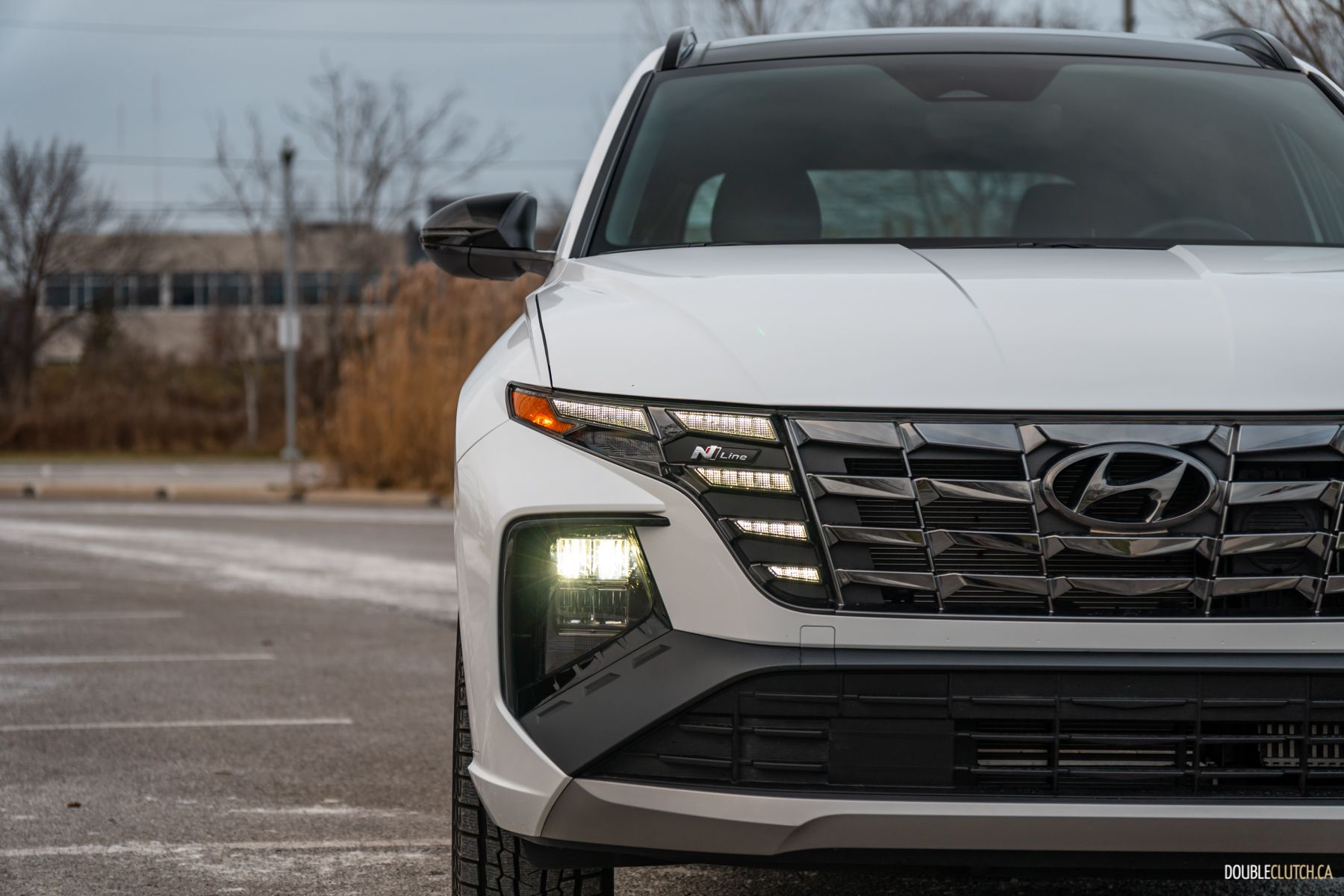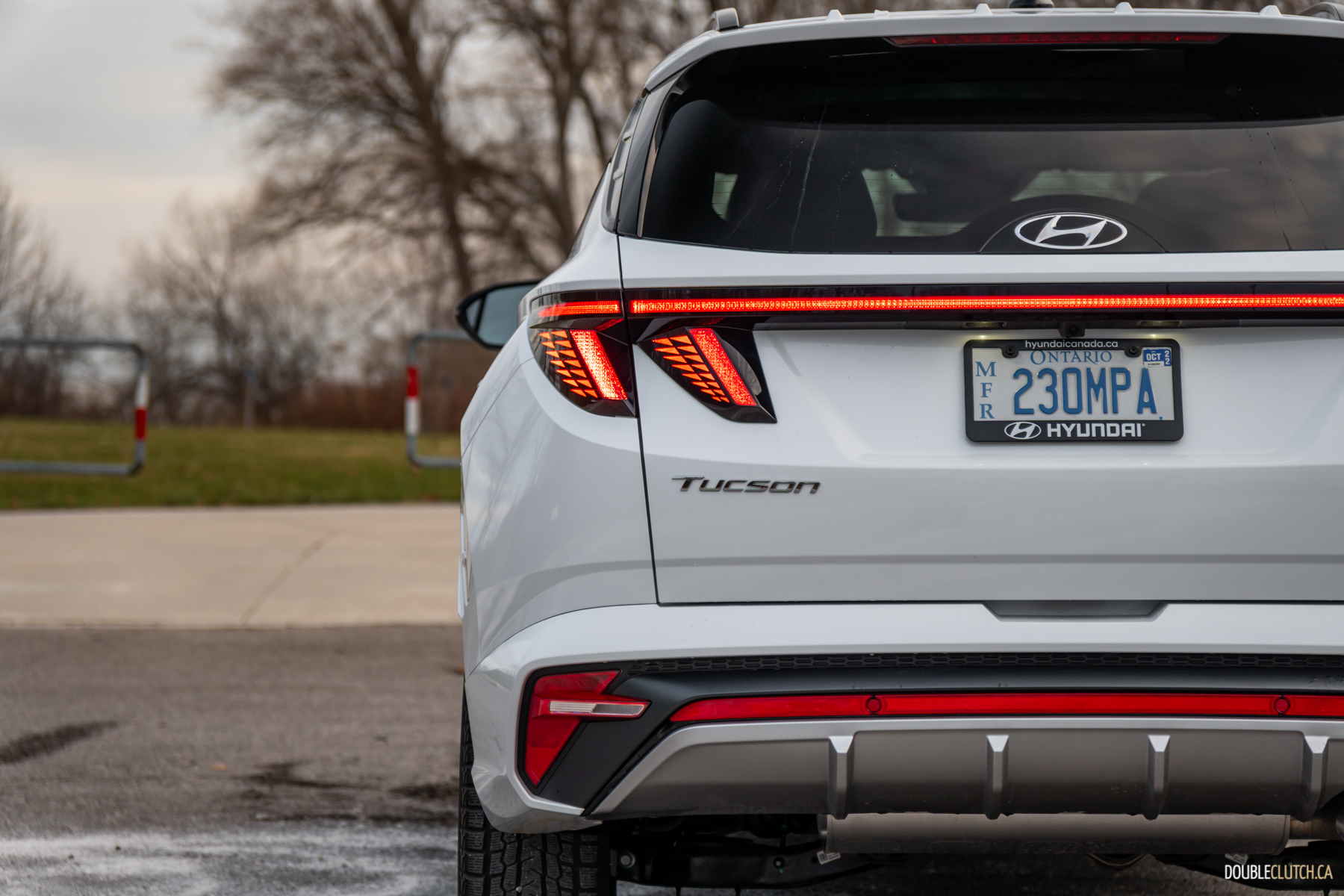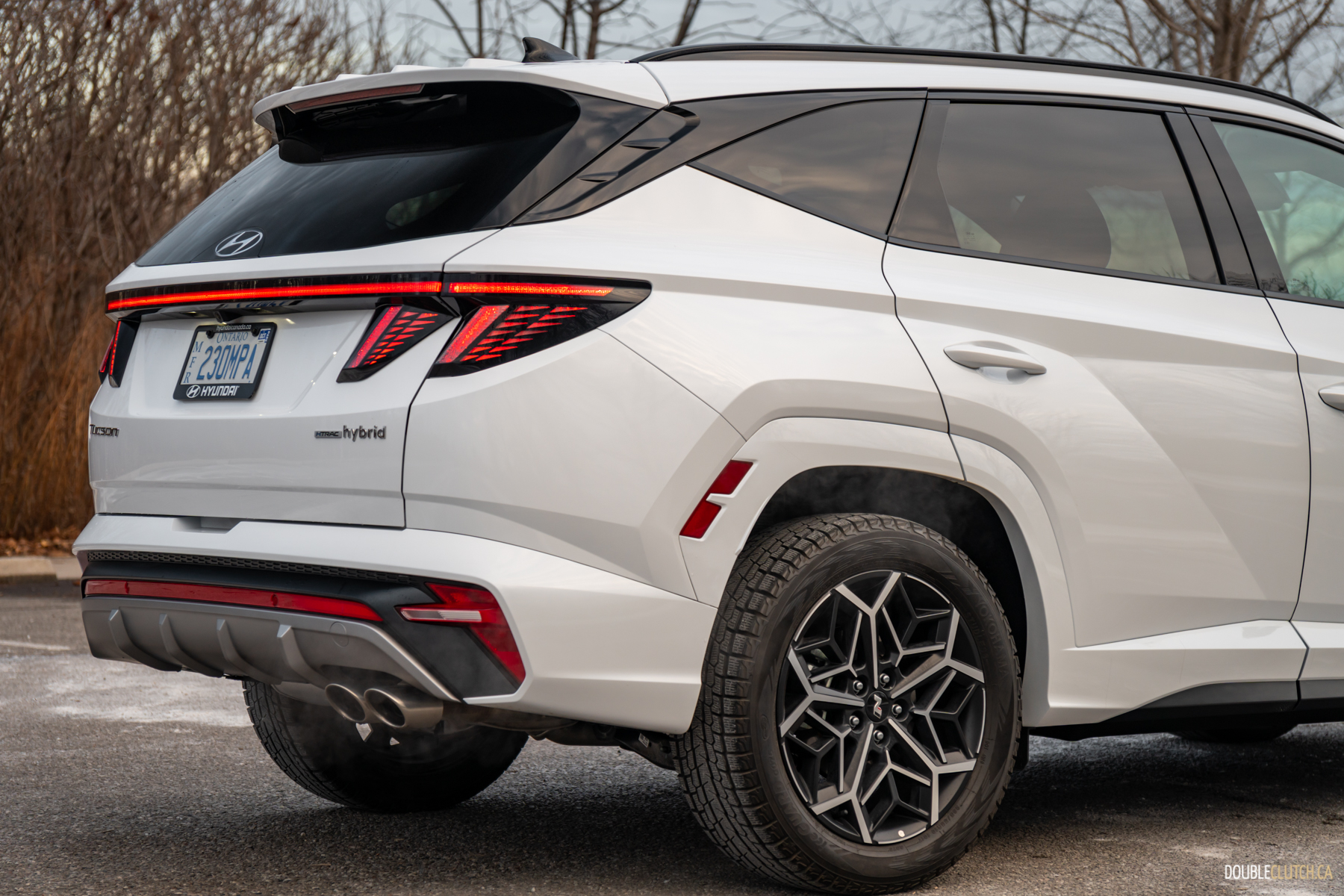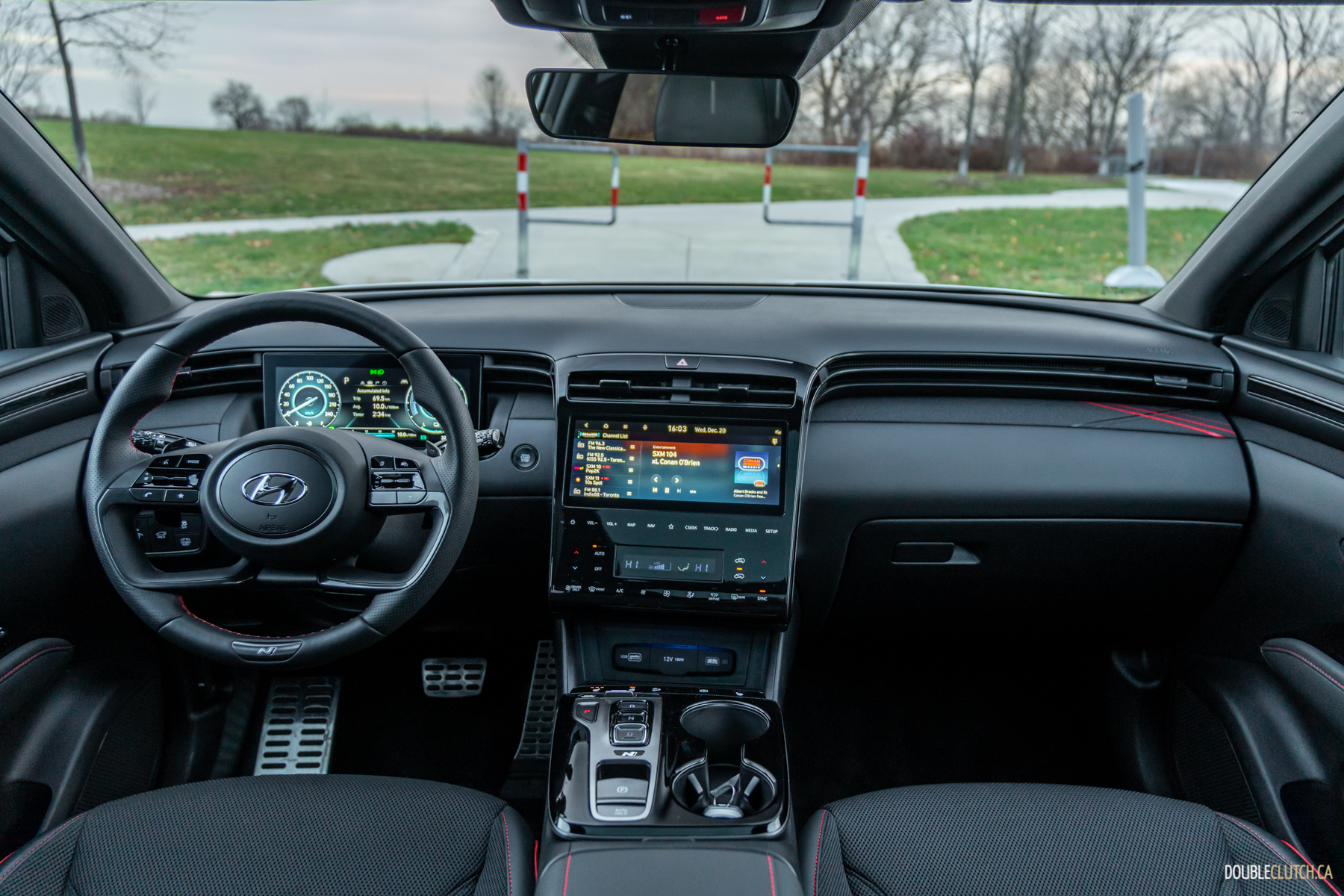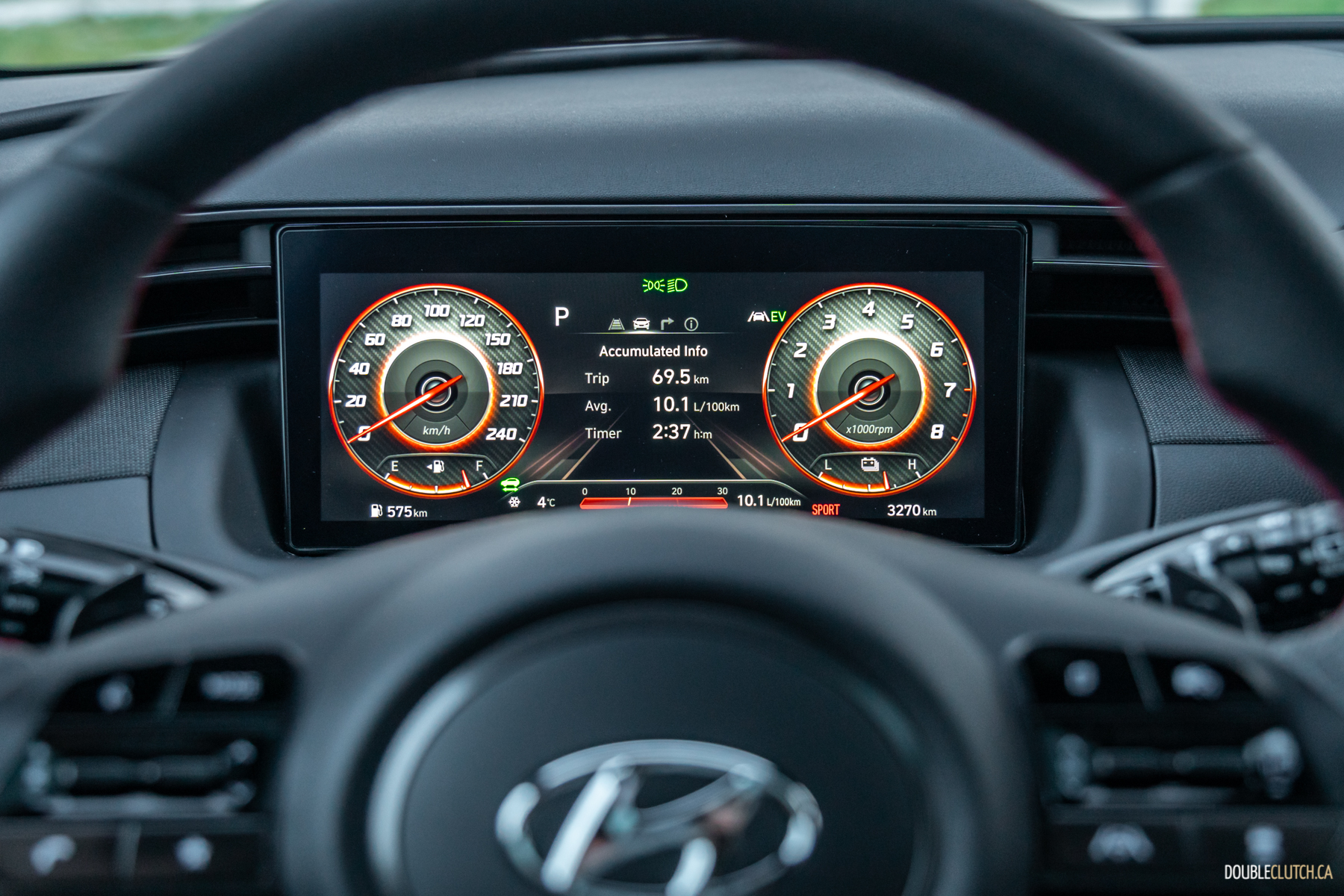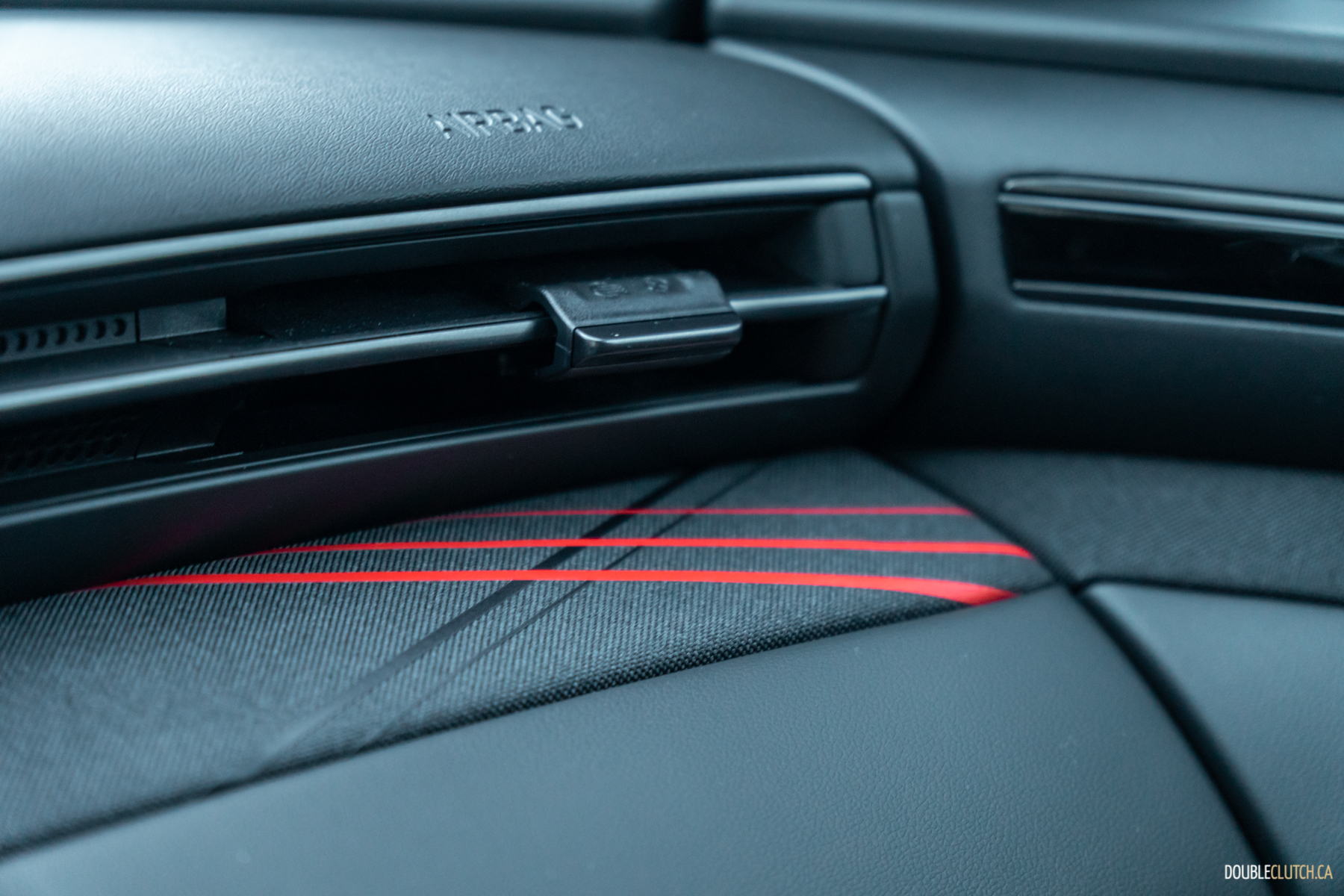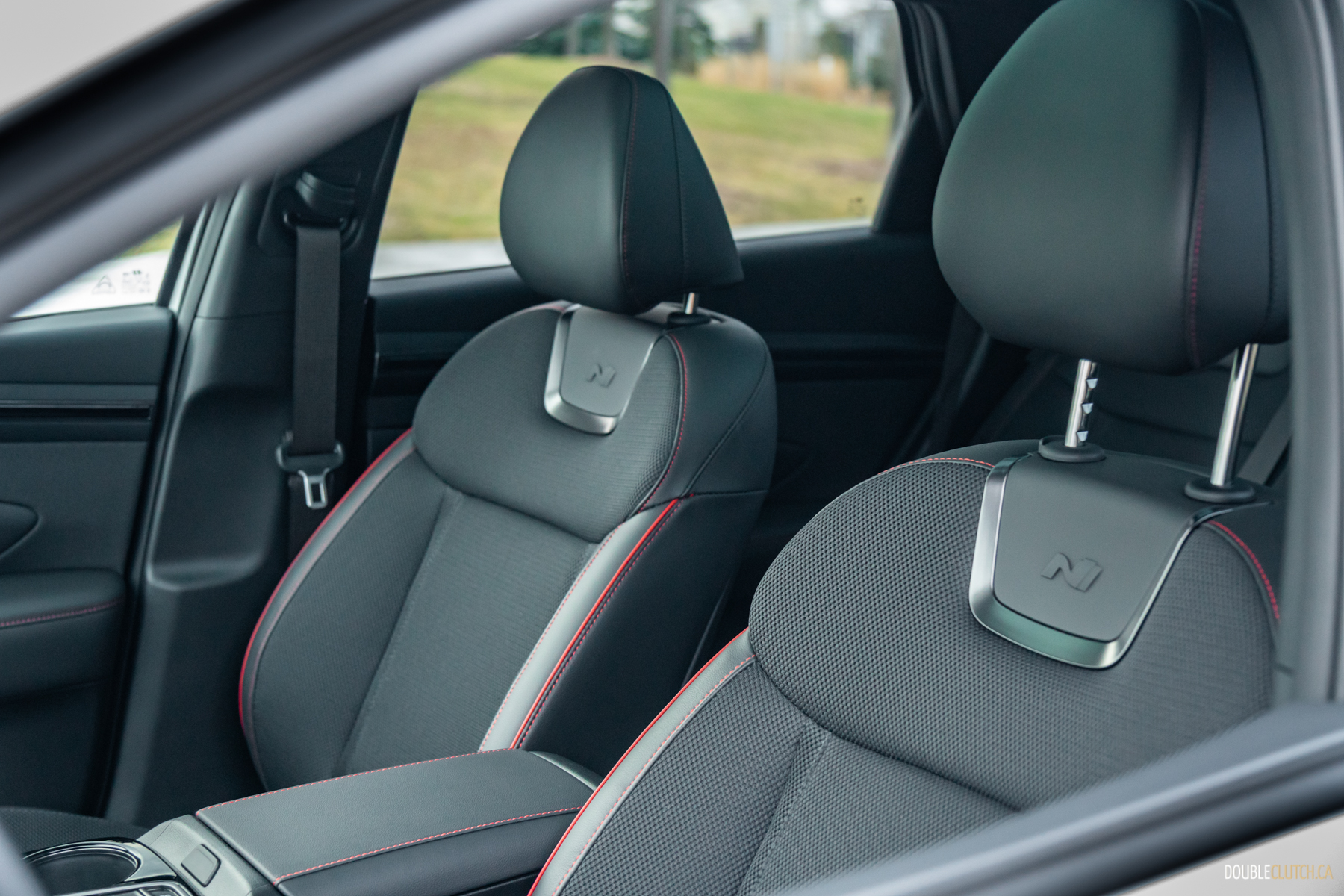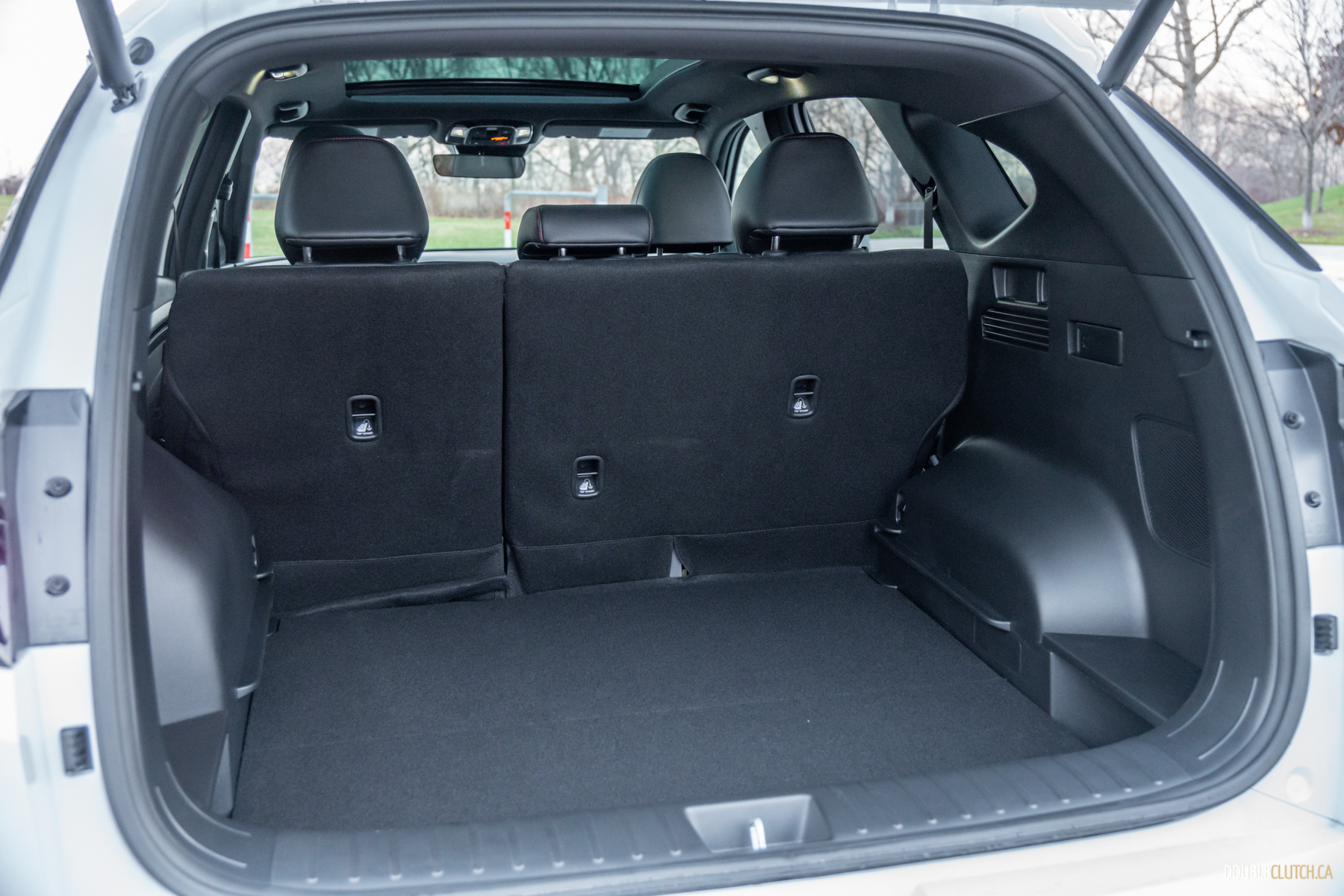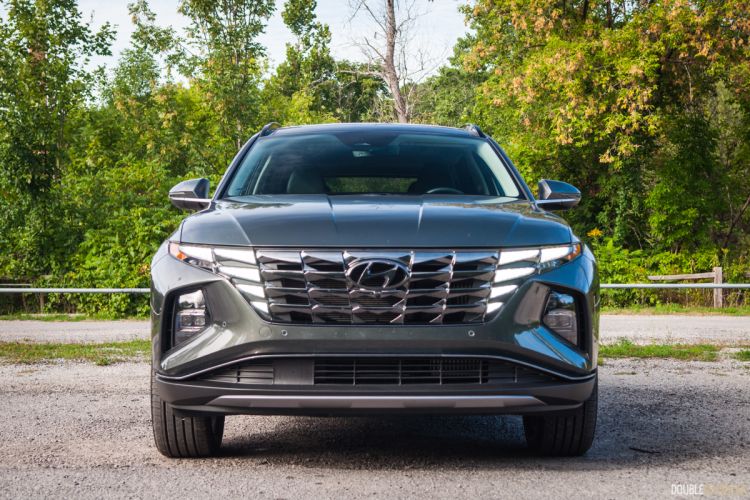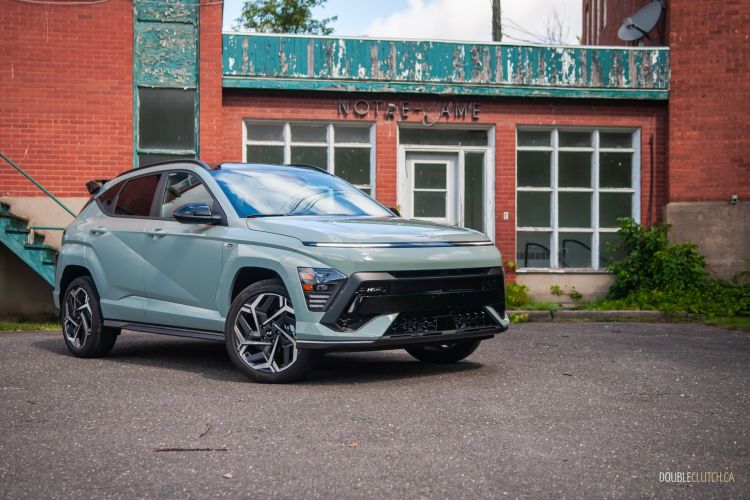It’s pretty impressive to think how far Hyundai has come in such a short period of time. Over the last couple of years or so, almost their entire lineup has been either totally redesigned or heavily revised to carve a new identity for themselves and stay competitive in an increasingly aggressive market. One of the first vehicles to flaunt Hyundai’s striking, tech-forward-origami style was the Tucson, their entry in the critical and crazily high volume compact crossover market, Not resting on their laurels, they’ve kept updating it, so we’re looking at the 2024 Hyundai Tuscon N-Line to see what’s new.
The big story here is the N-Line appearance package, incorporating revised front and rear fascias, dark trim, and machined 19-inch wheels on the outside, and grippier sport seats and red accents inside for those who like to emphasize the sport in sport utility vehicle. This is the first time the N-Line package has been offered with the hybrid powertrain, producing 228 horsepower and 258 pound-feet of torque. This application greatly improves performance and efficiency over the base 2.5-litre four-banger, and it’s as powerful as the Tucson plug-in hybrid.
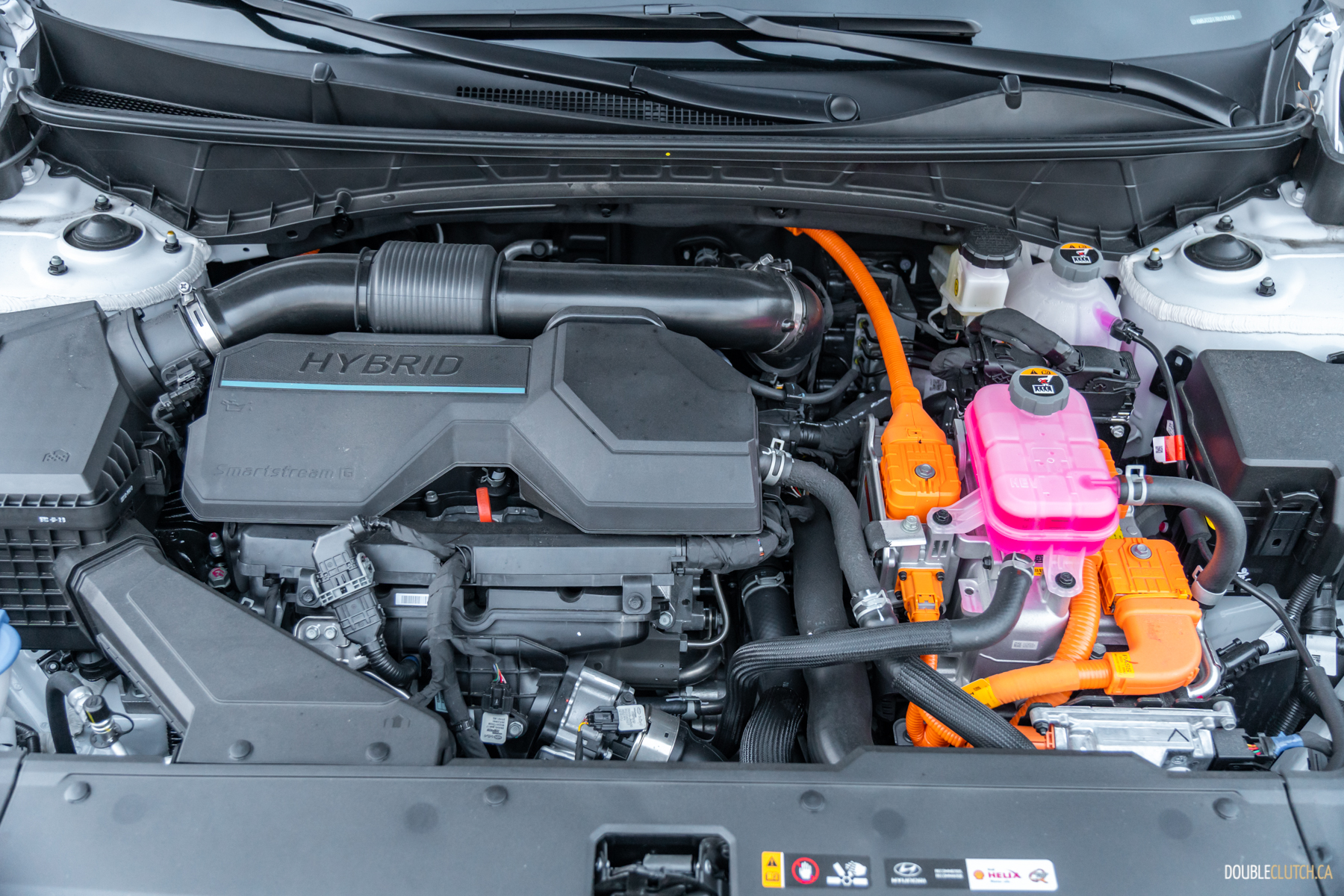
The Tucson N-Line’s interior does a convincing impersonation of an athletic commuter, with most of this sporting motif coming in the form of seats that appear as though they’re lifted directly out of the Elantra and Kona N models. They are tailored in grippy cloth with red piping and stitching, and the rest of the cabin is black with some red details and N-Line badges on the centre console, as well as a little flourish of colour on the far side of the dashboard, rounded out with a red-stitched leather-wrapped steering wheel.
Another update for 2024 is the inclusion of the 10.3-inch touchscreen from upper-trim Tucsons, as well as the Santa Cruz. All essential controls are arranged in an array of capacitive touch shortcuts under the wide format screen, which itself is housed in a glossy black waterfall of a center stack. While it does look nice with a flowing aesthetic, and all of the materials in the cabin look and feel reasonably good, this capacitive touch cascade came off as a little clunky to use. This is one of the only real missteps the Tucson makes.

It’s especially weird, given Hyundai’s commitment to matte surfaces and physical controls as seen in the Palisade. Either way, it’s a fairly nice place to be, and the Tucson is well-equipped with a panoramic roof, power-adjustable and heated seats, a heated steering wheel, a fairly intuitive infotainment system with built-in navigation, a digital gauge cluster, and a fairly comprehensive suite of tech toys. The Tucson is also fairly spacious with good head- and legroom in the front and rear, plus a healthy dose of storage space in the centre console up front and a usable cargo hold out back.
On the road, the Tucson drives quite well. It isn’t even close to the level of excitement offered by Hyundai’s thoroughbred N cars, but this N-looking Tucson avoids being a bore. The steering is fairly well-gauged with a healthy amount of heft and feedback. The response from the hybrid powertrain and the instantaneous torque it offers is more than adequate for a medium-spice commuter, offering confident merging and passing power. The six-speed automatic transmission it’s mated to is better than the CVT that is typically found in these hybrid applications, but is starting to feel a little long in the tooth, and is only just adequate.
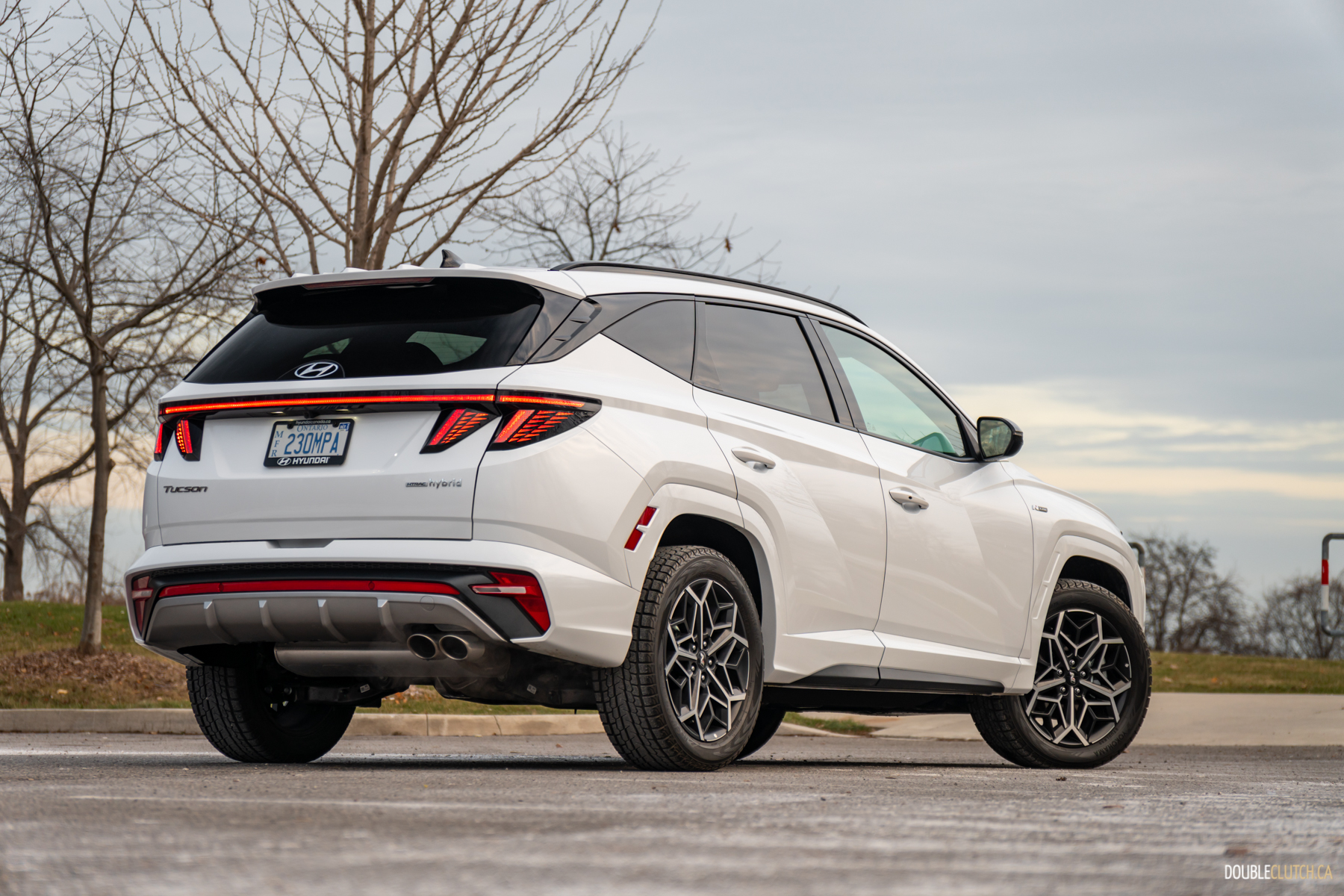
The Tucson N-Line has excellent on-road manners. It rides well and strikes a good balance between confidence and comfort. It’s also impressively quiet, isolating wind and road noise commendably. The 1.6-litre turbocharged four-cylinder engine headlining this hybrid powertrain is impressively refined and quiet, offering a very slick gas/electric handover, and avoids the coarse character that we’ve seen in other hybrid vehicles. It’s reasonably efficient, returning an average fuel use of 8.0 L/100 kilometres over our extended test — which isn’t bad, but is a fairly far cry from the Tucson’s advertised combined rating of 6.4 L/100 km. I did have to force the gas engine to stay running to generate heat, which no doubt impacted things.
Having seen what Hyundai and Kia have been capable of lately left me wanting a little more from this Tucson. I would love to see a revamped interior that learns lessons from the Palisade, and the new eight-speed automatic transmission from the Kona N-Line would be a welcome addition. Overall, the 2024 Hyundai Tucson N-Line Hybrid remains competitive within the compact crossover segment, with the N-Line trimmings injecting a dose of visual athleticism into the well-rounded overall package, if you’re into that sort of thing. Personally, I’d rather just skip the sport and go for a Luxury trim, which is priced at the exact same $40,599 as-tested as this N-Line. Whichever way you like it, there’s no denying the Hyundai Tucson lineup as a whole is an excellent value proposition in this segment.

